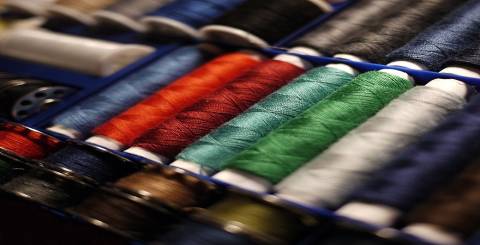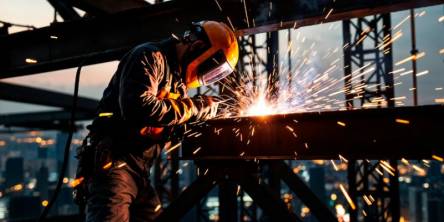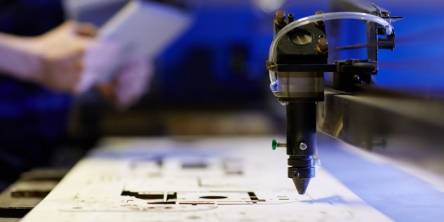Target and Prominence of Reactive Dyes and Textile Dyeing Process

Dyeing is a process that unleashes the power of dyes to transform colourless fibres into beautifully coloured pieces. The effective rate of dyes depends upon the reactive dyes manufacturer. Right manufacturer is one who has understood the objectives and importance of dyes and textile dyeing process, and implemented the same in manufacturing. Better understanding of purpose results into better quality products. So, let us have grip on apprehensions of dyes.
Objectives and importance of textile dyeing process:
- Cast Shade on Textile Substrate:
Textile substrates are fibres, yarns, fabrics and garments. Casting of colour on textile substrates is done uniformly to produce required depth of shade. Accuracy of the colour shade depends upon how well the dyeing has been done. For the fine-tuned colour desired efforts and knowledge of dyeing is needed.
- Attain Colour Durability:
Generally the substrates dyed unwell lose their colour shade during and after production process. What happens is when the textile substrate is sent for further treatment it goes through different production process level and hands. If the colour is not strong it would definitely change during production and end use. So, it is important to achieve acceptable durability of colour through dyeing process.
- Recreation of Shade:
Dyeing process helps in recreating the lost shade and making it look like fresh factory produced textile. The ultimate aim of refilling required shade into the textile substrate is not possible without textile dyeing process.
- Usage of Economical Dyes and Dyeing Procedures:
To get a good hold on dyeing process it is important to filter steps as per budget. Neglecting budget can never be a good way to proceed with production neither neglecting quality. There has to be a balance between both and this calls for a proper planning and approach.
- Ensuring Operations According to Ecological Requirements:
Beauty can never be achieved at the cost of lives and to achieve this standards have been defined. These standards help in ensuring safe ecological operations and quality dyeing process hand in hand.
- Production in Minimal Time:
Fast production helps in reaching more and more quality customers. Late deliveries are unacceptable especially in cut-throat market where competition rises each day. Fast dyeing procedures help in fast manufacturing of end product.
These were the objectives and importance of textile dyeing process that helps in adding colours into our day to day life.
- Economical Cost:
Among numerous procedures for texture rejuvenation, dyeing is really economical. It depends upon the dye assortment you use and the application procedure, you will get genuinely fantastic results when you utilize dye. When you think about all costs associated with making new buys at the primary indication of colour fading in your textures, materials and towels.
A race cannot be won with an injured horse similarly the mission of quality dyeing cannot be accomplished with bad raw material i.e. dye.
Factors that determine the potency of dye are:
- Colour Intensity:
The intensity of the dye colour defines how well it can impart colour to the textile materials. Dyes with intense colour can blend well with the material to result into desirable shade.
- Solubility in Water:
For the uniformity of the dyeing process it is important for the dye particles to be water soluble. Water acts as a carrier that takes dye particles into the inner molecular structure of the fibre.
- Penetration Strength:
The durability of dye colour depends upon the molecular strength of the dye i.e. how well they penetrate into the inner molecular structure of substrate.
- Durability to Wet Treatments:
Chemical bond formed in between fibre and dye molecules determine colour fastness property which ultimately determines dye durability in wet treatments like washing.
Similar Articles
Explore CNC turning—its components, process, benefits, applications, and future trends shaping modern precision manufacturing in various industries.
In the competitive industry of car manufacturing, attaining exceptional performance along with an innovative design needs the incorporation of modern manufacturing technologies
Facing delays, quality issues, or supply chain problems in hardware manufacturing? Learn the top 7 challenges—and practical fixes—to streamline production.
In the rapidly advancing landscape of high-tech manufacturing, electronics, and materials science, diamonds are no longer just gemstones they’re high-performance materials redefining what’s possible in technology.
A business in the manufacturing industry today has to ensure that it chooses the precision-engineered components suppliers keenly since the competition is very stiff
Selective Laser Sintering, or SLS, has established itself as one of the most reliable and widely used 3D printing technologies. This method is valued for its ability to produce complex, durable, and high-quality parts without the constraints of traditional manufacturing.
In the retail and display industry, the visual appeal of products is paramount. Customers are constantly drawn to displays that are not only eye-catching but also provide an immersive experience.
As previously established, CO2 laser technology operates by shining a high-power infrared beam on a mixture of gas that contains carbon dioxide, nitrogen, and helium. This technology is well known for the fact that it is able to engrave onto a variety of materials such as wood, glass, plastic, leather, and even some metals with high precision and without contact.
CNC Machining has emerged as a vital technique in the current production process, as it provides an efficient and accurate means of manufacturing items with complex geometries. This technology is applied across aerospace, automobile, and medical devices manufacturing fields, and various other industries.









